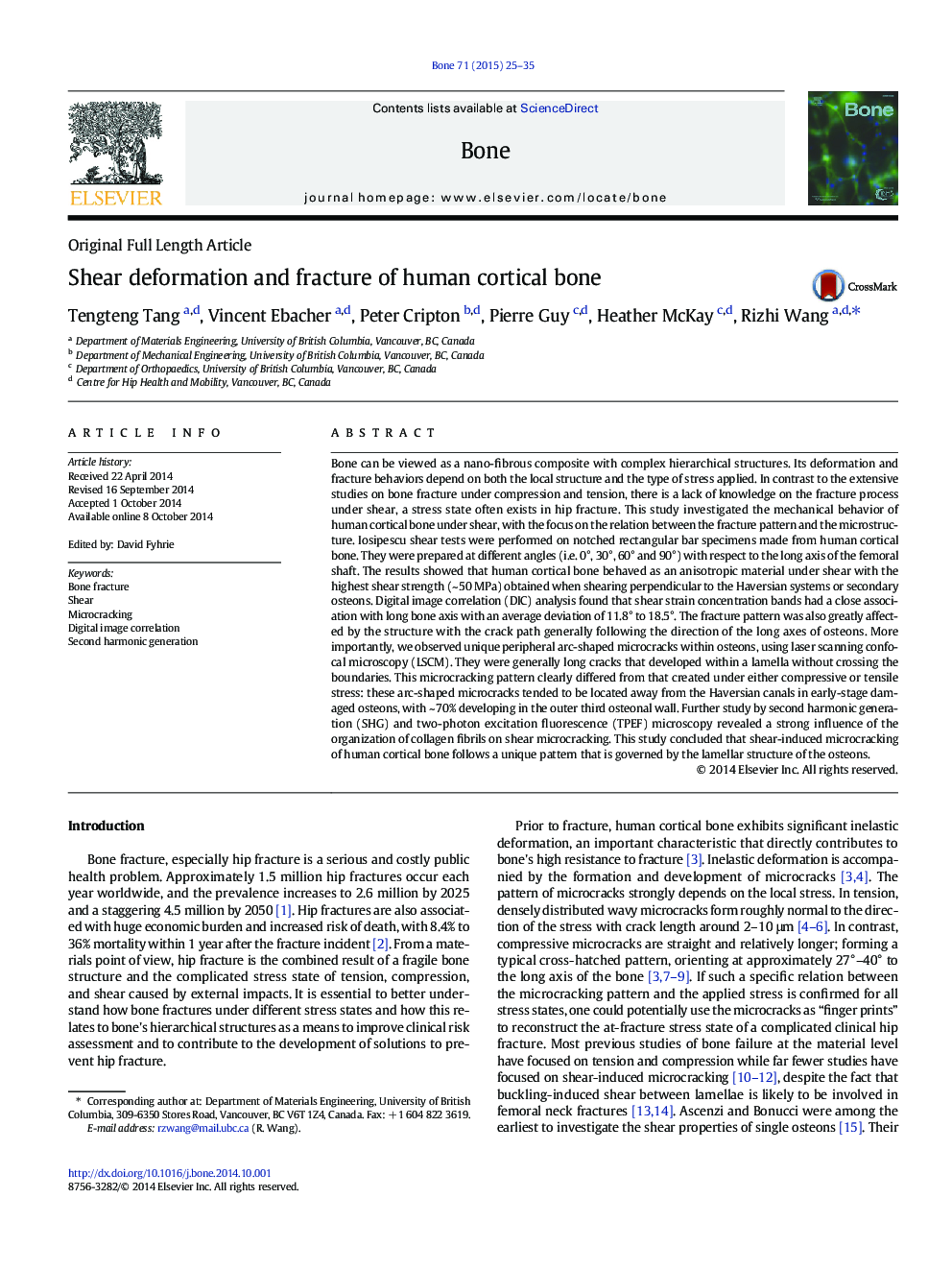| کد مقاله | کد نشریه | سال انتشار | مقاله انگلیسی | نسخه تمام متن |
|---|---|---|---|---|
| 5889790 | 1568148 | 2015 | 11 صفحه PDF | دانلود رایگان |
- Human cortical bone under shear is anisotropic in its deformation and fracture processes.
- A unique arc-shaped microcracking pattern is associated with the inelastic deformation of bone under shear.
- Combining second harmonic generation and two-photon excitation fluorescence microscopy could directly relate microcracking to the lamellar structure.
- Haversian lamellae play an important role in the microcracking process of human cortical bone.
Bone can be viewed as a nano-fibrous composite with complex hierarchical structures. Its deformation and fracture behaviors depend on both the local structure and the type of stress applied. In contrast to the extensive studies on bone fracture under compression and tension, there is a lack of knowledge on the fracture process under shear, a stress state often exists in hip fracture. This study investigated the mechanical behavior of human cortical bone under shear, with the focus on the relation between the fracture pattern and the microstructure. Iosipescu shear tests were performed on notched rectangular bar specimens made from human cortical bone. They were prepared at different angles (i.e. 0°, 30°, 60° and 90°) with respect to the long axis of the femoral shaft. The results showed that human cortical bone behaved as an anisotropic material under shear with the highest shear strength (~ 50 MPa) obtained when shearing perpendicular to the Haversian systems or secondary osteons. Digital image correlation (DIC) analysis found that shear strain concentration bands had a close association with long bone axis with an average deviation of 11.8° to 18.5°. The fracture pattern was also greatly affected by the structure with the crack path generally following the direction of the long axes of osteons. More importantly, we observed unique peripheral arc-shaped microcracks within osteons, using laser scanning confocal microscopy (LSCM). They were generally long cracks that developed within a lamella without crossing the boundaries. This microcracking pattern clearly differed from that created under either compressive or tensile stress: these arc-shaped microcracks tended to be located away from the Haversian canals in early-stage damaged osteons, with ~ 70% developing in the outer third osteonal wall. Further study by second harmonic generation (SHG) and two-photon excitation fluorescence (TPEF) microscopy revealed a strong influence of the organization of collagen fibrils on shear microcracking. This study concluded that shear-induced microcracking of human cortical bone follows a unique pattern that is governed by the lamellar structure of the osteons.
329
Journal: Bone - Volume 71, February 2015, Pages 25-35
